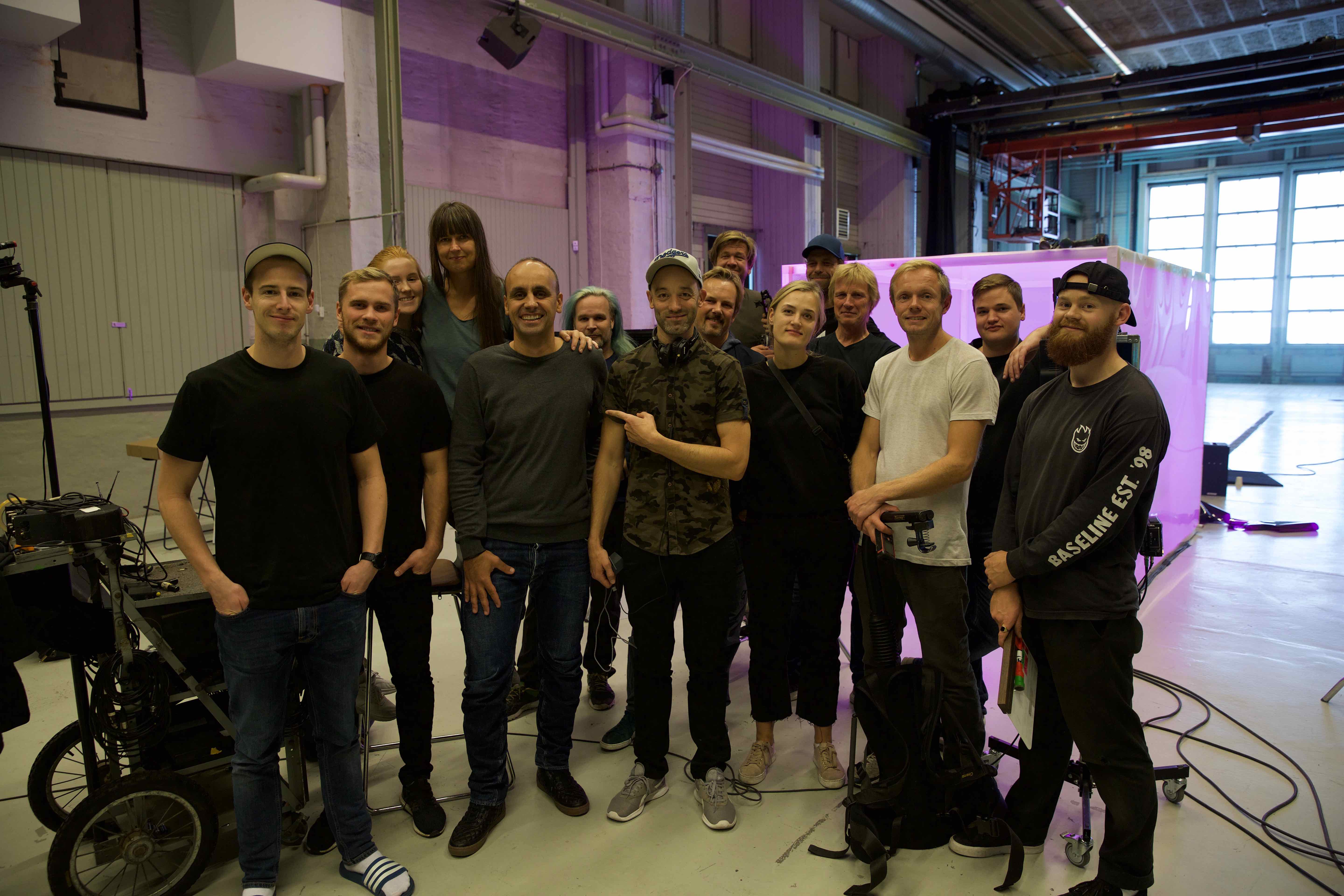Our new study reports, for the first time, functional interactions among EEG brain...
- Aristotle University of Thessaloniki
- +30 2310 991839
- [email protected]
Ole Paus is a Norwegian troubadour in the Swedish-Norwegian ballad tradition, an author, a poet and an actor.
Lars Vaular is a Norwegian rapper and hip-hop artist, award-winning painter and author.
Margaret Berger is a Norwegian singer, songwriter, music director, and DJ. She represented Norway in the Eurovision Song Contest 2013 finishing in fourth place with the song "I Feed You My Love".
But what kind of music are they most fond of?
This is the concept of Telia Norge mobile network operator new media campaign: “Music Freedom”. And it was for us, Neuroinformatics GRoup of Aristotle University of Thessaloniki, to try to find out by literally “reading their minds”.
Eavesdropping on the musical brain
With the help of our neuroinformatics algorithms and the use of Emotiv consumer EEG devices we have conducted a music experiment within a TV production studio in Oslo, in order to sneak a look at our guest artists’ musical brains and unravel how they respond to different genres and tunes. And the results were surprisingly revealing!
EEG & Music recommendation: at the forefront of consumer-based musical brain research
In our 2016 research paper, we introduced our vision for the integration of bio-personalized features of musical aesthetic appreciation into modern music recommendation systems (e.g. Spotify, Apple Music, Pandora, Deezer,Tidal) to enhance the listener’s feedback and rating process. A few months later, our study drew the attention of the digital business news.
On the way to Oslo
In September 2017, we had just shared a preview of the latest version of our algorithms which will soon appear in Neurocomputing. It was when the famous Norwegian Director Christian Holm-Glad and his partner Dr. Jo Røislien reached out to us. In collaboration with Bacon Oslo production company, they had to turn into reality a highly innovative idea shared by DDB Oslo advertising agency on behalf of Telia Norge. “No more guilty pleasures, any song can be a favorite - no matter what genre” is the concept of Telia’s “Music Freedom”campaign. In the same scope, we were asked to design and conduct a music experiment in which the artists were introduced to various music genres, including some almost unknown to them, while we recorded their brainwaves. But this time, a new ambitious milestone was set: “Dimitrios, we want the whole thing to be implemented in 24 hours.” were Christian’s words.
During the following days, Ole, Lars and Margaret closely worked with us and helped us build thumbnail models of their musical taste using the 5-star rating scale. We then carefully designed our experiment to encapsulate a neurodynamics-equivalent of these models by recording the artists’ brainwaves. Therein, we also incorporated a second group of songs, representative of various music genres. This second group was provided by the production and was unknown to the artists at the time.
Finally, it was Oslo’s time; we had to conduct the experiment within the production studio. Our guest artists were introduced to the basics of electroencephalography and to Emotiv EPOC mobile EEG devices which we used for the task.
Action!
Wireless EEG devices, EEG recording suite and our experiment builder software were orchestrated to carefully align randomly played extracts of our guest artists song collection with their corresponding brainwaves. At the same time, Christian and his team were recording the whole thing. Upon acquiring recorded data from our artists, our team (Dimitrios Adamos, Nikos Laskaris and Fotis Kalaganis) worked in parallel between Oslo and Thessaloniki to extract patterns of brain activity that fit their music style and build a personalized model for each artist. Based on these models and the similarity of brainwave signature patterns in the recorded data, we delivered predictions for the selected (by the production) music genres. Finally, dr. Sunniva Rose was there to help us disseminate the results.
It turned out that Lars Vaular was not very fond of any of the music he originally thought he liked, while Ole Paus tested very favorably on some genres he had never listened to before. Margaret Berger broke out laughing when she heard some of her results. We revealed that an old song of hers blasted the 5-star scale reaching a score of 5.3. This was really fascinating, as Margaret had previously witnessed that she experienced the “music chills” effect while listening to that song during the experiment.
An innovative future ahead
On-demand music recommendation services feature as the major disruptive innovators of the digital music ecosystem, while the business model of music economy is continuously being reformed.
In the anticipated forms of the digital universe, technology would proactively facilitate people’s expectations and wearable devices would transparently interface with systems and services. Therein, we envision the pragmatic use of our research algorithms for interfacing modern consumer EEG device with on-demand music streaming services relishing the benefits of holistic human-friendly music applications.
What was really exciting during this film project was that we met people with different orientations who also shared a similar vision:
Telia Norge Campaign Videos
https://telia.no/magasinet/hvilken-musikk-liker-du-egentlig
Concluding Remarks
It has been a fascinating experience to participate in such an innovative film project. I’d like to thank Christian, Jo and the whole production team for the fruitful collaboration. Special thanks to Emil Jensen, the production assistant, for always being at my side. Finally, my greatest gratitude to Ola Narum Berg, the production manager at Bacon Oslo, for providing everything we needed to make this project a reality and for kindly providing the english-subtitled version of the 60s campaign clip.
Dr Dimitrios A. Adamos
